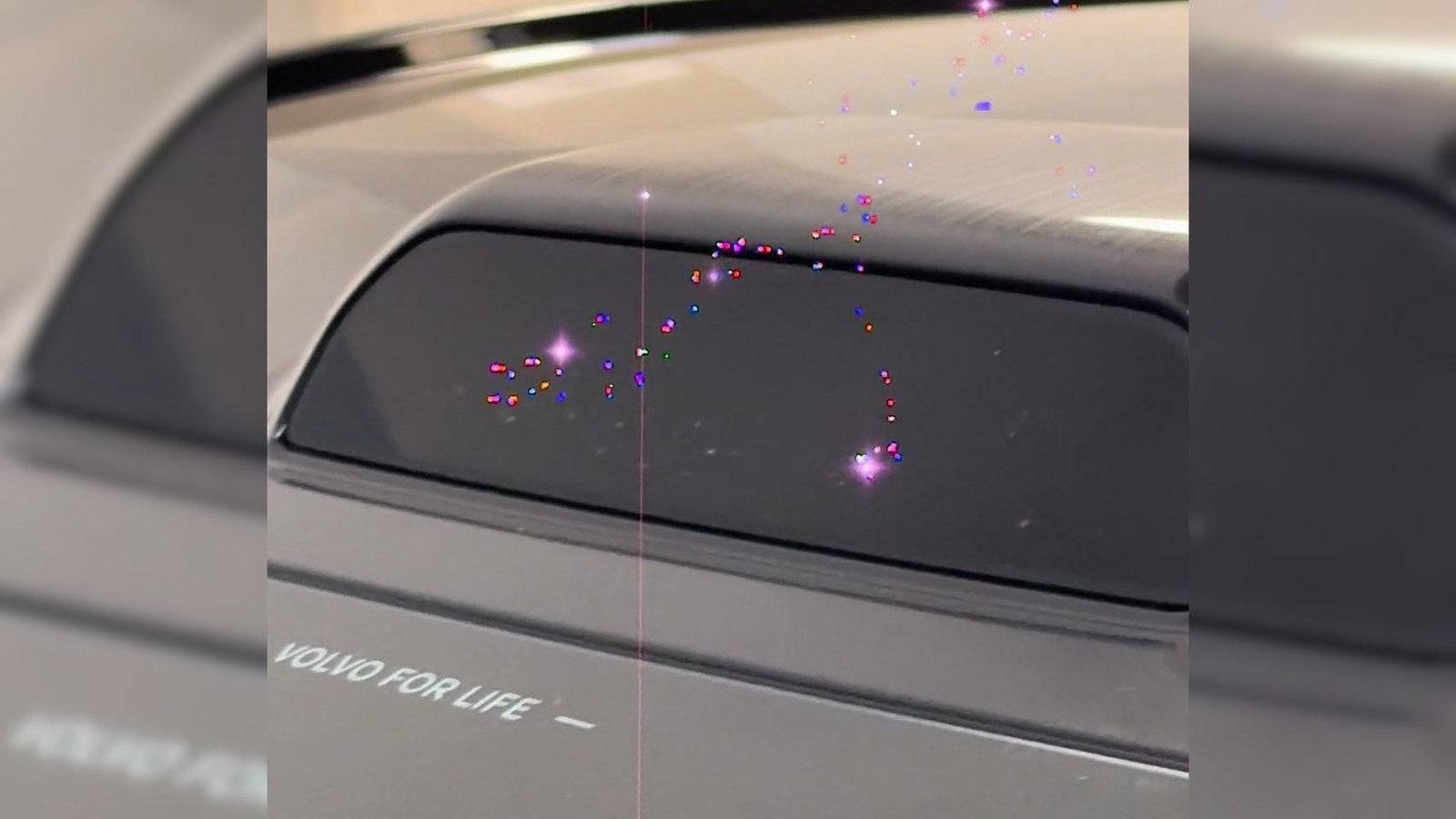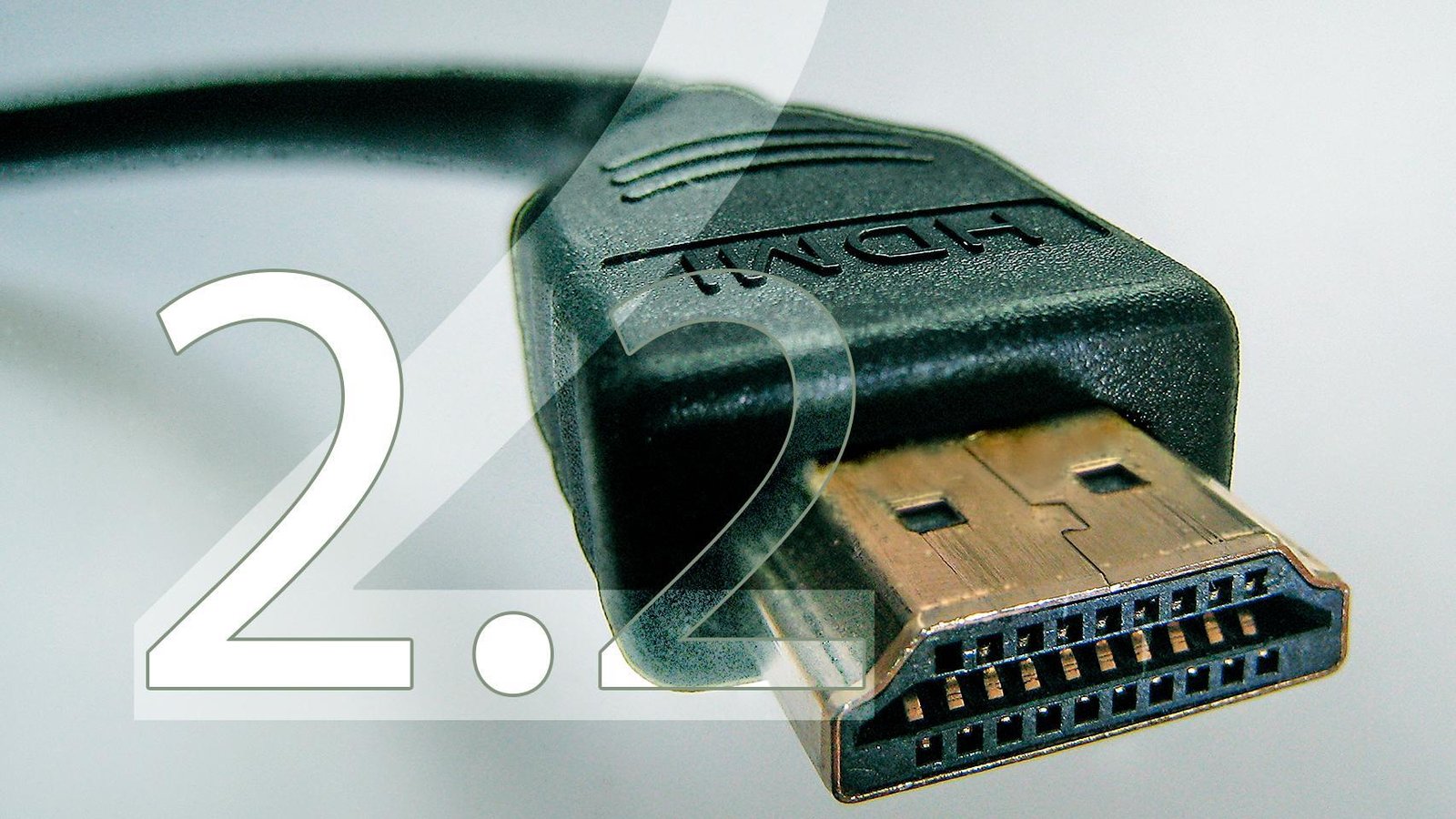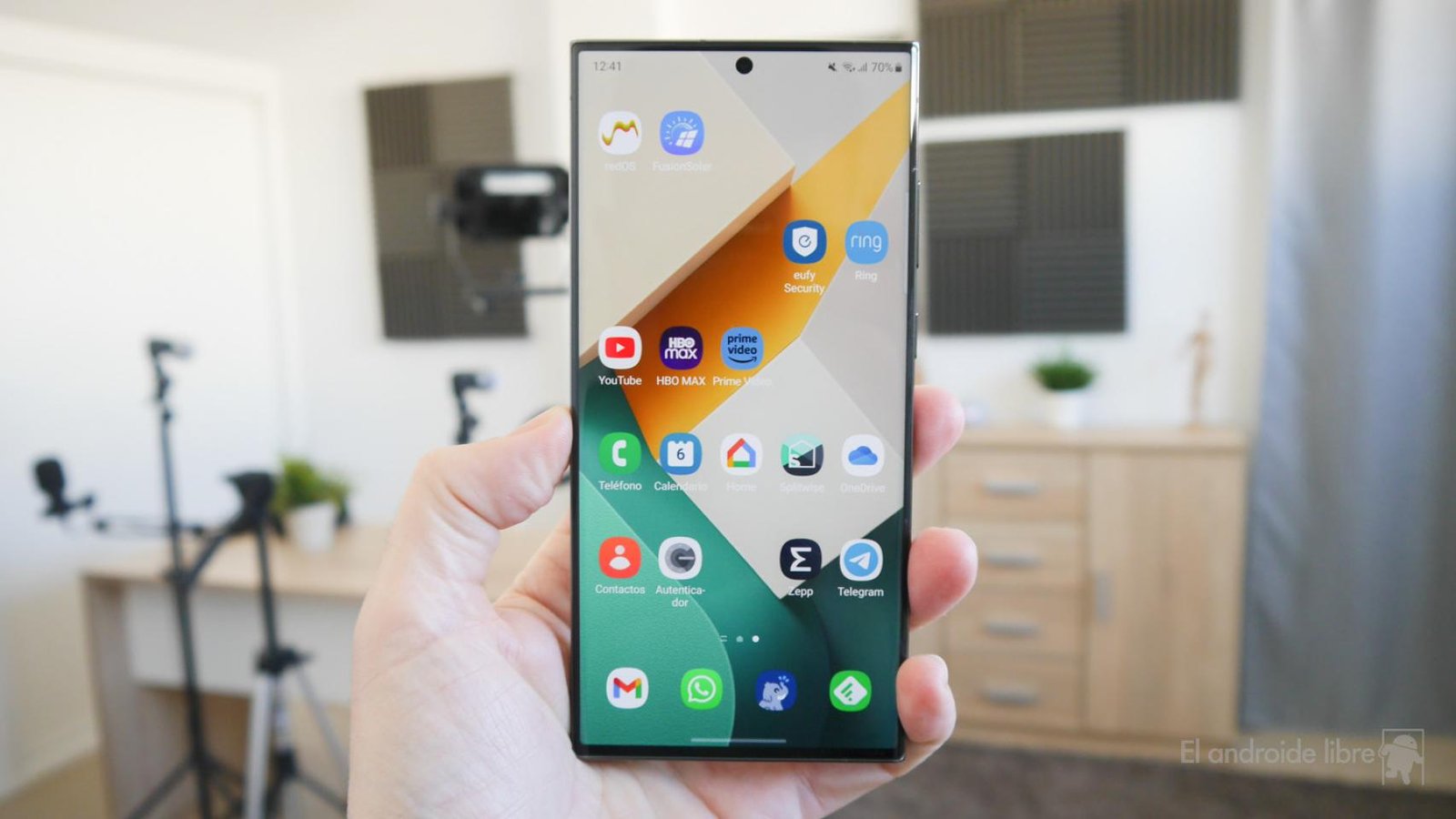Imagine you buy a new car, and want to show off recording a video or taking a photo with your smartphone; But when you aim the camera to the car, suddenly notes that on the mobile screen small color points begin to appearwhich are expanding throughout the image as you move the device. And the points do not disappear; From then on, all the photos you take with the mobile show those imperfections.
Although it looks like a horror story, it is very real, and it is just what happened to a Reddit user who was recording a video of the New Volvo Ex90and that did not take into account the great disadvantage of one of the star technologies of this new model: the Lidar sensor, or more specifically, the version used by Volvo and the wavelength used in this device.
The lidar sensor is that ‘lump’ that is located on the top of the new Volvo Ex90, and that is present in increasing vehicles; For example, the new Xiaomi Su7 uses the same technology and has a similar bulge. Lidar is an acronym for “Light detection and ranging”, “Light detection and location”, and refers to a device capable of using the light to determine the distance to an object, using laser. The issuer triggers a laser beam, this bouncing against the object, and the device captures the reflection; Measuring the time it has taken to perform this path, the device is capable of calculating the distance to which the object is quite accurate.
Lidar is not precisely new technology, but it has not been until recently that it has been implemented in cars to improve driving aid functions, and it is one of the bases of the future autonomous driving. Creating a mesh of points around, the car is able to have an approximate idea of the environment and detect objects such as other cars or pedestrians. The great advantage of Lidar with respect to other technologies, such as the cameras used in the Tesla, is found in the precision and the greatest amount of data that allows to obtain a three -dimensional image of what is in front of the car.
However, Lidar also brings his own disadvantages, such as high costs, or, as this Reddit user has demonstrated, who can break the mobile camera. What is happening in the viral video has a very simple explanation: it is the same as we look at the sun directly. The laser rays fired by the lidar of the former ‘Fríen’ the camera sensor, directly affecting the captured pixels.
Volvo itself already warned of this danger, and its support page asks users to Do not point their cameras directly to the Lidar device; But does that mean that we can no longer take pictures of our car without losing the camera? Not really; It all depends on certain factors, some unique in this car.
To start, Volvo emphasizes that We should not take close photos to the device; And this is evident in the viral video, which shows a greater amount of dead pixels when the user approaches. At a greater distance, there should be no problems, and it is the reason why this car is not destroying cameras as it circulates down the street. If we are going to take nearby photos, Volvo recommends using protection filters in the camera, and there are some that already have protections against this type of high intensity light sources.
Beijing (China)
A detail that may have worsened is that the Volvo Ex90 Use a wavelength laser lidar of 1550 nmsomething relatively rare in the sector. Until now, most manufacturers have opted for a 905 nm wavelength, which is less safe for the human eye; For that reason, individual pulses of light are less powerful. By using a longer wavelength, safer for humans, it is possible that Volvo has increased the power of the laser and thus improve performance, but that would be causing this problem with cameras.
Therefore, the lidar radars are Insurance for the human eyeeven the new ones used by Volvo; But if we are going to take a photograph closely, it is advisable to be careful not to get too close to the vehicle, or use some type of additional protection if we do not want to take the mobile to the technical service.



